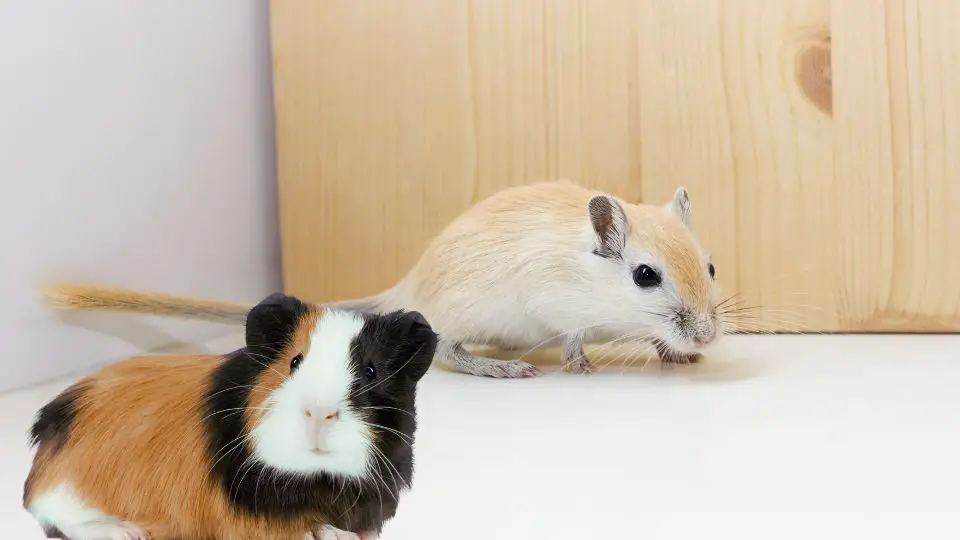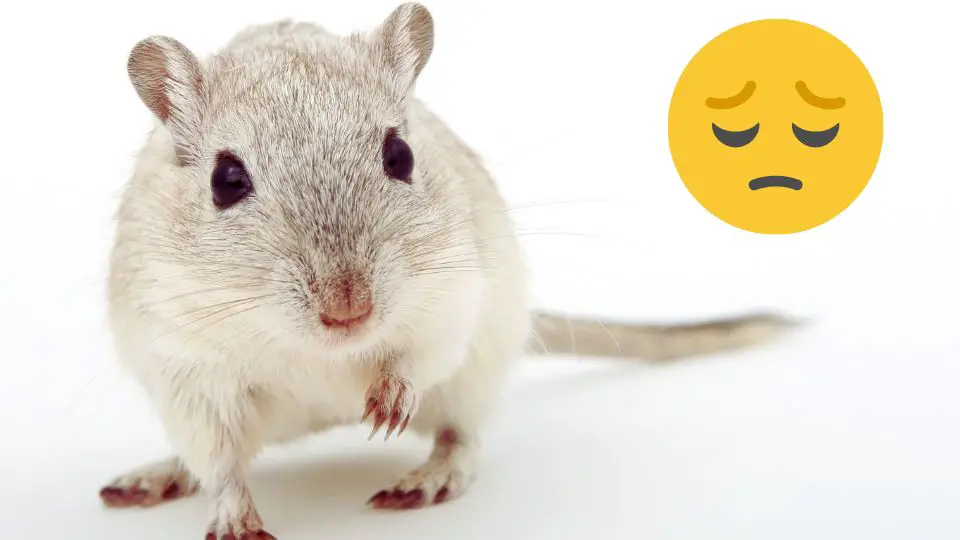Have you noticed that your gerbil’s nose is red? If so, you may be concerned about what could be causing this condition.
A gerbil’s nose may be red due to a condition called nasal dermatitis, which can be caused by allergies, poor hygiene, irritants, or environmental factors.
In this article, we will explore the reasons behind a gerbil’s red nose and delve into the topic of nasal dermatitis.
Understanding Nasal Dermatitis in Gerbils
Nasal dermatitis is a skin condition characterized by redness, inflammation, and irritation on the nose of gerbils. It can range from mild redness to more severe cases with scabbing and discomfort.
Gerbils may exhibit the following symptoms when suffering from nasal dermatitis:
- Redness: The nose of the gerbil appears redder than usual.
- Inflammation: Swelling and irritation may be present, causing discomfort to the gerbil.
- Scratching or rubbing: Gerbils with nasal dermatitis may frequently scratch or rub their noses in an attempt to relieve the itching or discomfort.
Early detection and prompt treatment are crucial when it comes to nasal dermatitis in gerbils. Timely intervention can prevent the condition from worsening and causing further discomfort to the gerbil. Ignoring the signs of nasal dermatitis can lead to more severe skin damage and potential secondary infections.
Causes of Nasal Dermatitis
In our experience, the most common causes of nasal dermatitis in gerbils include:
- Allergies and Irritants: Gerbils may be sensitive to certain allergens or irritants in their environment, such as bedding materials, cleaning products, or scented items. Exposure to these allergens or irritants can trigger inflammation and lead to nasal dermatitis.
- Poor Ventilation and Hygiene: Inadequate airflow and a dirty or poorly maintained cage can contribute to the development of nasal dermatitis. Accumulated bacteria, dust, or ammonia from urine can irritate the gerbil’s sensitive nose.
- Excessive Moisture or Dryness: Extremes in humidity levels can cause nasal dermatitis in gerbils. Both excessive moisture and dryness can lead to skin irritation and redness on the nose.
Treating Nasal Dermatitis in Gerbils
When dealing with nasal dermatitis in gerbils, it is crucial to seek professional guidance from a veterinarian experienced in small animal care. They will conduct a thorough examination to accurately diagnose the condition and determine the underlying cause. It is important to remember that self-diagnosis and treatment can lead to ineffective or potentially harmful outcomes.
Recommended Treatment Options
Once a veterinarian has diagnosed nasal dermatitis in your gerbil, they may recommend various treatment options based on the severity and underlying cause of the condition. The following are common treatment approaches for nasal dermatitis:
- Topical Ointments or Creams: In mild cases of nasal dermatitis, your veterinarian may prescribe or recommend topical ointments or creams. These medications are applied directly to the affected area to soothe irritation, reduce inflammation, and promote healing.
- Antibiotics for Secondary Infections: If nasal dermatitis has led to a secondary bacterial infection, your veterinarian may prescribe antibiotics to eliminate the infection. It is crucial to complete the full course of antibiotics as prescribed to ensure effective treatment.
- Adjusting Environmental Conditions: In some cases, environmental factors may contribute to nasal dermatitis. Your veterinarian may suggest modifications to the gerbil’s habitat to alleviate the condition. This can include improving ventilation, ensuring proper humidity levels, and maintaining a clean living space.
Proper Administration of Medication and Care
Proper administration of medication and care is vital for the successful treatment of nasal dermatitis in gerbils. Follow your veterinarian’s instructions regarding dosage, frequency, and duration of medication. Be gentle when applying topical ointments or creams to the affected area to avoid further irritation.
In addition to medication, providing proper care for your gerbil is essential during the treatment period. Ensure a clean and hygienic living environment, regularly clean the cage, and avoid irritants that may aggravate the condition. Proper nutrition and a balanced diet can also support the gerbil’s overall health and immune system.
We recommend regular follow-up appointments with your veterinarian to monitor the progress of the treatment and make any necessary adjustments. They can provide further guidance on managing nasal dermatitis and address any concerns you may have.
How to Clean a Gerbil’s Nose
If you notice that your gerbil’s nose is dirty or there is a buildup of porphyrin, you may need to clean their nose to reduce irritation and maintain their comfort. While waiting to see a veterinarian or while waiting for treatment to take effect, you can clean your gerbil’s nose at home. Here’s a step-by-step guide on how to clean your gerbil’s nose properly:
- Gather the necessary supplies: You will need a clean, soft cloth or cotton pad and lukewarm water. Ensure that the cloth or cotton pad is gentle and won’t cause any further irritation.
- Create a comfortable environment: Find a quiet and calm area where you can safely handle your gerbil. Minimize distractions and make sure your gerbil feels secure during the cleaning process.
- Handle your gerbil gently: Approach your gerbil with care, using slow and gentle movements. Talk to them in a soothing voice to keep them calm and reassured throughout the process.
- Dampen the cloth or cotton pad: Dip the cloth or cotton pad into lukewarm water. Make sure it is moist but not dripping wet. Excess water can be irritating to your gerbil’s sensitive nose.
- Clean the nose gently: Gently hold your gerbil and use the damp cloth or cotton pad to wipe their nose, carefully removing any dirt or porphyrin buildup. Be extremely gentle to avoid causing any discomfort or distress to your gerbil.
- Monitor their response: Observe your gerbil’s behavior during and after the cleaning process. If they seem stressed or uncomfortable, it may be best to discontinue the cleaning and consult a veterinarian for further guidance.
Note that cleaning your gerbil’s nose at home is a temporary solution and should not replace veterinary care. If your gerbil’s nose continues to be dirty or shows signs of irritation, it’s crucial to seek professional advice from a veterinarian experienced in small animal care. They can assess the underlying cause and provide appropriate treatment options for your gerbil’s specific condition.
Preventing Nasal Dermatitis in Gerbils
In order to prevent nasal dermatitis in your gerbil, here are the things we recommend to pay attention to.
Provide a Clean and Well-Ventilated Habitat
Maintaining a clean and well-ventilated habitat is essential in preventing nasal dermatitis in gerbils. Here are some key practices to follow:
- Regular Cage Cleaning: Clean the gerbil’s cage regularly to remove urine, feces, and other debris that can contribute to skin irritation. Replace bedding material and clean food and water containers frequently.
- Avoid Strong Irritants or Allergens: Identify and avoid potential irritants or allergens in the gerbil’s environment. This may include strong-smelling cleaning products, scented bedding materials, or dusty substrates. Opt for unscented and hypoallergenic options to minimize the risk of nasal irritation.
Ensure Proper Humidity Levels
Maintaining appropriate humidity levels is important for gerbil health and can help prevent nasal dermatitis. Consider the following measures:
- Monitor and Adjust Humidity as Needed: Gerbils thrive in environments with moderate humidity levels. Monitor humidity using a hygrometer and make adjustments if necessary. Aim for a relative humidity range of 40-60% to prevent excessive dryness or moisture.
- Avoid Extreme Dryness or Excessive Moisture: Both excessively dry and overly humid conditions can irritate the gerbil’s nose. Ensure proper airflow and avoid placing the gerbil’s habitat in areas prone to excessive dryness or dampness.
Promote a Balanced and Nutritious Diet
A balanced and nutritious diet is essential for gerbil health and can contribute to preventing nasal dermatitis. Consider the following dietary practices:
- Offer a Variety of Fresh Foods: Provide a diverse range of fresh foods, such as vegetables, fruits, and herbs, to ensure your gerbil receives essential nutrients. Avoid feeding excessive amounts of sugary or fatty foods that may negatively impact their overall health.
- Ensure Adequate Vitamin Intake: Gerbils require specific vitamins, including vitamin C and vitamin E, for healthy skin and immune function. Ensure their diet includes appropriate sources of these vitamins, or consider providing supplements as recommended by a veterinarian.
FAQ
Will Red Nose Go Away On Its Own?
In some cases, a red nose in gerbils may resolve on its own, especially if it is a result of temporary irritation or a mild condition. However, if the redness persists or is accompanied by other concerning symptoms, it is important to consult a veterinarian for a proper diagnosis and appropriate treatment.
Why Is My Gerbil’s Nose Sore?
A gerbil’s nose may become sore due to various reasons, including nasal dermatitis, allergies, irritants, or secondary infections. It is essential to determine the underlying cause through veterinary consultation to provide the appropriate treatment and alleviate any discomfort your gerbil may be experiencing.
Why is my gerbil rubbing his nose?
Gerbils may rub their noses for various reasons. It can be a normal behavior related to grooming or exploring their environment. However, persistent or excessive rubbing of the nose may indicate an underlying issue, such as nasal irritation, itchiness, or discomfort. It is advisable to observe your gerbil closely and consult a veterinarian if you have concerns.
Can a red nose be cured?
The treatment and potential cure for a red nose in gerbils depend on the underlying cause. Red nose can often be treated effectively with appropriate veterinary care, including topical ointments, antibiotics for secondary infections, and addressing environmental factors.
Do gerbils get porphyrin?
Yes, gerbils produce porphyrin, which is a reddish-brown pigment that can be found around their eyes, nose, and other facial areas. The presence of porphyrin is a natural occurrence and can increase during times of stress, illness, or environmental factors. However, excessive porphyrin production may indicate an underlying health issue that requires attention and veterinary care.
Conclusion
In conclusion, a red nose in gerbils can be a sign of nasal dermatitis, a condition that requires attention and care. By understanding the causes, such as allergies, poor hygiene, or environmental factors, we can take steps to treat and prevent nasal dermatitis. Early detection and treatment are crucial to alleviate discomfort and prevent the condition from worsening.
Regular veterinary check-ups, proper hygiene, appropriate environmental conditions, and a balanced diet contribute to preventing nasal dermatitis. By prioritizing your gerbil’s health and well-being, you can ensure they have a happy and comfortable life free from the discomfort of nasal dermatitis.







